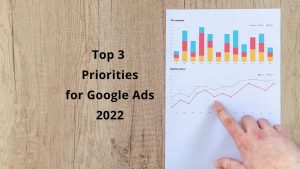In the ever-evolving landscape of marketing and brand strategy, understanding human psychology plays a pivotal role in crafting effective campaigns and resonating with target audiences. One psychological phenomenon that has garnered significant attention from brand strategists is the Framing Effect. Rooted in behavioral economics and cognitive psychology, the Framing Effect highlights the powerful influence of presentation and context on decision-making. In this exploration, we delve into the nuances of the Framing Effect, its various manifestations; and why it holds immense importance for brand strategists in shaping consumer perceptions and driving successful marketing campaigns.
Unveiling the Framing Effect: A Cognitive Lens
At its core, the Framing Effect underscores the principle that the way information is presented or “framed” can significantly impact individuals’ judgments and decisions. This phenomenon arises from the cognitive biases and heuristics that individuals employ when processing information. Psychologists Daniel Kahneman and Amos Tversky are often credited with pioneering the study of cognitive biases; including the Framing Effect, through their groundbreaking research on prospect theory.
Prospect theory suggests that individuals evaluate potential outcomes relative to a reference point, often influenced by the presentation of information. In the context of decision-making, people are more sensitive to potential losses than gains, leading to a bias known as loss aversion. This bias is particularly significant in the Framing Effect; where the presentation of options as gains or losses can dramatically alter individuals’ preferences and choices.
Manifestations of the Framing Effect
The Framing Effect manifests in various ways, each shedding light on the intricate interplay between cognition and decision-making. Some of the most notable manifestations include:
- Positive vs. Negative Framing: The classic example of the Framing Effect involves the presentation of a medical procedure’s success rate as either a survival rate or a mortality rate. When the procedure is presented as having a 90% survival rate, individuals are more likely to opt for it than when it is presented as having a 10% mortality rate. This showcases the impact of positive and negative framing on risk perception and decision-making.
- Attribute Framing: The way attributes or features of a product are framed can significantly influence consumer preferences. For instance, a beverage labeled as “90% fat-free” might be more appealing than the same beverage labeled as “10% fat.”
- Temporal Framing: The temporal context in which information is presented can shape decisions. When choices are framed in the short-term, individuals might prioritize immediate gratification, while framing choices in the long-term can encourage more future-oriented decision-making.
- Goal Framing: Presenting information in a way that aligns with individuals’ goals can sway their decisions. For example, positioning a fitness tracker as a tool to “achieve a healthier lifestyle” appeals to consumers focused on wellness goals.
- Comparative Framing: Comparing options side by side can influence perceptions. A sale that offers “Buy one, get 50% off on the second” might be perceived differently from “Buy two and save 50% on the second.”
- Numerical Framing: The presentation of numerical data can impact perceptions of magnitude. A product priced at $199 might be perceived as significantly cheaper than the same product priced at $200, despite the marginal difference.
Why the Framing Effect Matters to Brand Strategists
Brand strategists operate in a dynamic environment where consumer perceptions and decision-making are paramount. The Framing Effect holds crucial implications for their work:
- Influencing Perceived Value: How a brand’s offerings are framed can shape consumers’ perceived value. By strategically highlighting positive attributes and framing offerings in a way that aligns with consumer goals, brand strategists can enhance perceived value and drive purchase intent.
- Managing Risk Perception: The Framing Effect’s influence on risk perception can guide brand strategists in mitigating perceived risks associated with products or services. Effective communication can reframe potential drawbacks into positive attributes, reducing consumer hesitancy.
- Guiding Pricing Strategies: Numerical framing directly impacts pricing perceptions. Brand strategists can employ pricing tactics that leverage this effect, making products appear more affordable or justifying premium pricing through effective framing.
- Creating Emotional Resonance: Framing narratives around brand stories can evoke specific emotional responses. By choosing the right framing, brand strategists can connect with consumers on a deeper level and foster brand loyalty.
- Differentiating in a Crowded Market: In saturated markets, differentiation is key. Attribute framing allows brand strategists to highlight unique features and position offerings distinctively, aiding in brand differentiation.
- Empowering Decision-Making: By understanding temporal and goal framing, strategists can empower consumers to make decisions that align with their aspirations, ultimately enhancing the overall customer experience.
- Crafting Compelling Campaigns: Framing can determine the success of marketing campaigns. Whether it’s positive framing to highlight benefits or comparative framing to showcase superiority over competitors, effective framing enhances the persuasive impact of campaigns.
Navigating Ethical Considerations
While the Framing Effect is a powerful tool in the hands of brand strategists, it raises ethical considerations. Manipulative framing that exploits cognitive biases can erode consumer trust and tarnish a brand’s reputation. Brand strategists must prioritize transparency, authenticity, and a genuine concern for consumer well-being. Ethical framing involves presenting information accurately and responsibly, enabling consumers to make informed decisions aligned with their best interests.
Conclusion
In the ever-evolving realm of brand strategy, the Framing Effect emerges as a psychological phenomenon with profound implications. Understanding how individuals perceive and process information allows brand strategists to craft campaigns that resonate, inspire, and drive desired behaviors. By leveraging various framing techniques and navigating ethical considerations; brand strategists can harness the power of the Framing Effect to create meaningful connections with consumers, differentiate their brands; and thrive in a competitive marketplace shaped by cognitive biases and decision-making nuances. As the field of marketing continues to evolve; embracing the insights offered by the Framing Effect becomes not just an option, but a necessity for those seeking to master the art of persuasion and influence in the minds of their target audiences.

![Read more about the article Which Schema Types Are Used Most by Industry [Research]](https://rohitnshetty.com/wp-content/uploads/2021/08/Schema-300x169.png)

